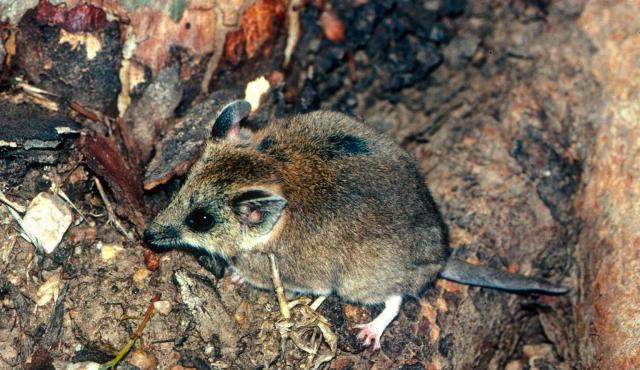
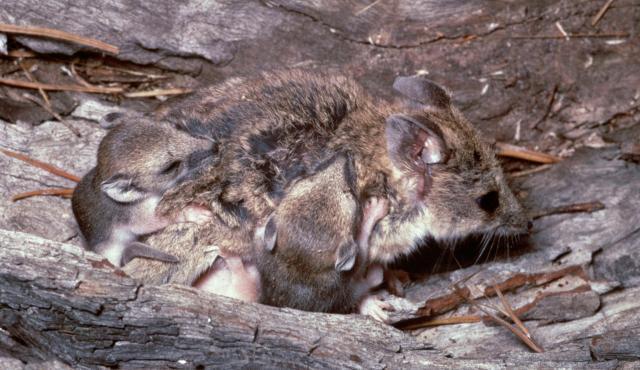
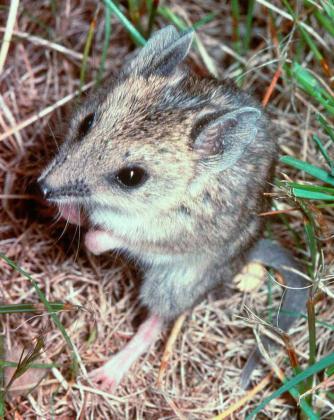
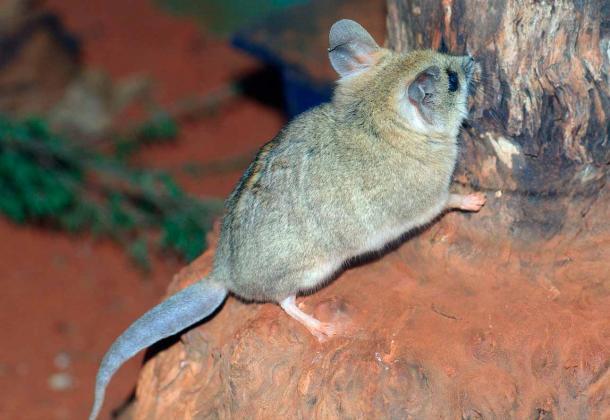
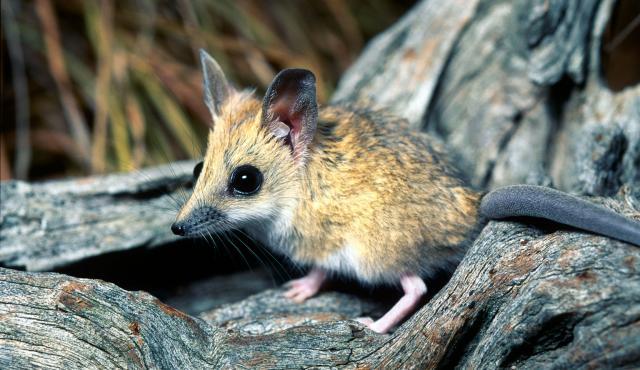
Fat-tailed Dunnart
Sminthopsis crassicaudata
| Details | |
|---|---|
| Type | Mammal |
| Group | |
| Other Common Names | Fat-tailed Marsupial Mouse |
| Biology | Nocturnal. Shelters (sometimes in groups) in a grass nest they make in hollow logs or under grass tussocks, rocks or logs. Their flexible breeding pattern means they can breed quickly anytime between late winter to late summer when there is enough food. Dunnarts can have 2 to 3 litters per season with up to 10 young per litter. The young are weaned at 10 weeks. Dunnarts have short sharp teeth suited to crunching insects and spiders. Their scats have visible insect remains. The use of agricultural pesticides could affect their survival. |
| Distinctive Markings | Fat tail, yellow-brown fur with white underneath, large ears and eyes. |
| Taxonomy | |
|---|---|
| Phylum | Chordata |
| Class | Mammalia |
| Order | Dasyuromorphia |
| Family | Dasyuridae |
| Genus | Sminthopsis |
| Species | crassicaudata |
Source: Atlas of Living Australia
Stores fat in its tail as a reserve when food is in short supply.
| Interesting Facts | |
|---|---|
| Diet | Carnivore. Eats ground dwelling invertebrates such as beetles, spiders, earthworms and insect larvae. Does not need to drink as it obtains enough water from its food. |
| Habitat | Can live in a wide variety of habitats but prefers open areas such as grasslands and low shrublands with scattered fallen trees or rocks. |
| Native Status | Native to Australia |